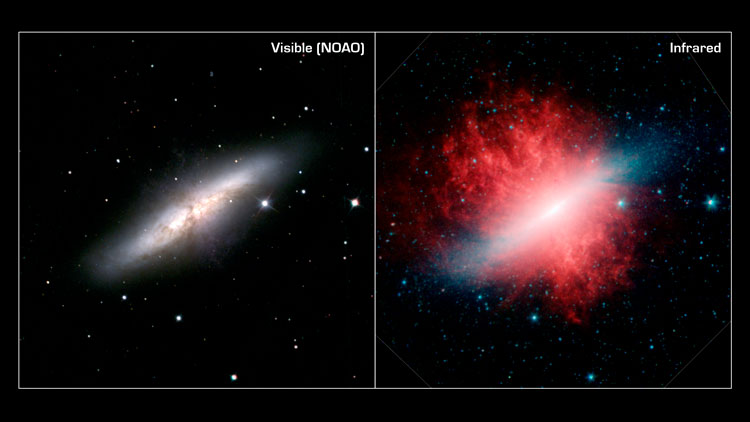
This year the Spitzer Space Telescope celebrates 16 years in orbit. Spitzer is an infrared telescope that is used to study the early universe. Scientists want to learn about how stars and galaxies are formed. This telescope lets us see the hidden wonders of the universe.
Many objects in space give off energy. Some stars, like the Sun, give off energy we can see. Other objects give off energy we cannot see. The Spitzer Space Telescope is designed to detect infrared radiation. Infrared radiation is a type of energy that is invisible to the human eye.
Even after stars have exploded and their solar systems no longer exist, energy is still present. The Spitzer Space Telescope can interpret this energy and tell us about events that happened millions of years ago. In this way, the telescope is actually looking into the past, sometimes at objects that no longer exist.
Spitzer is managed and operated by a team of people from NASA’s Jet Propulsion Laboratory in Pasadena, California. Spitzer’s original mission was planned to last about five years. This telescope exceeded everyone’s expectations. In fact, one of the instruments onboard is still working to this day! The Spitzer Space Telescope will continue to send images back to Earth until early 2020, when its mission will finally be complete.
What Do You Think? Why do you think it’s important to have tools such as the Spitzer Space Telescope?
Photo Credit: NASA/JPL-Caltech/C. Engelbracht (Steward Observatory) and the SINGS team



